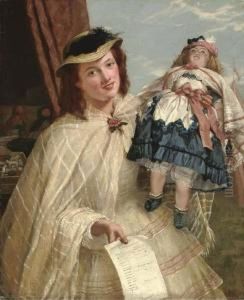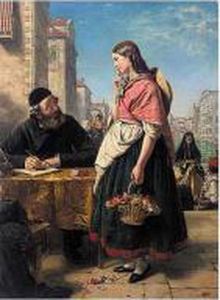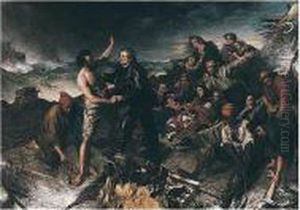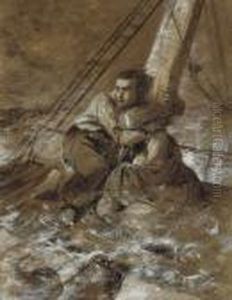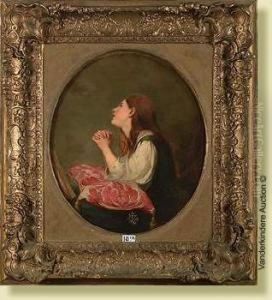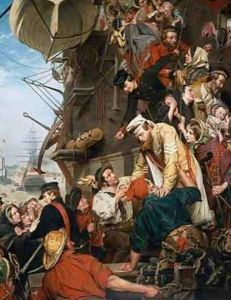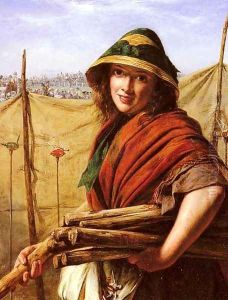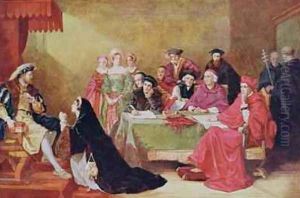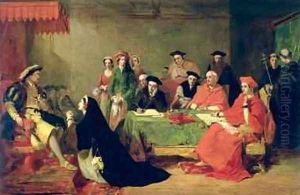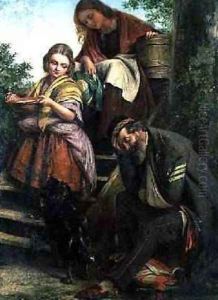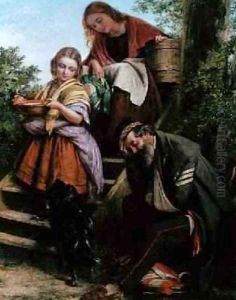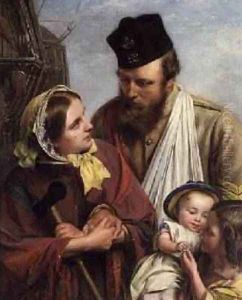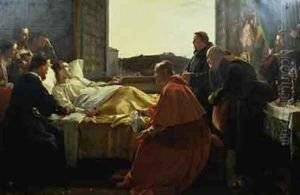Henry Nelson O'Neil Paintings
Henry Nelson O'Neil was a British painter and a member of the Cranbrook Colony, known for his historical and genre paintings. Born on January 7, 1817, in St Pancras, London, O'Neil became an influential artist during the 19th century. He was a student at the Royal Academy, where he began exhibiting his works in 1838. His paintings often depicted scenes from literature and history, and he was particularly interested in themes of human suffering and the dramas of life.
O'Neil's works were characterized by their vivid detail, emotional intensity, and often, a moral message. One of his most famous paintings is 'Eastward Ho!', painted in 1857, which showed the departure of British soldiers for the Indian subcontinent. This was followed by the complementary work 'Home Again' in 1859, which depicted the return of the troops. These paintings captured the public's imagination and were a commentary on the impact of the British Empire and military campaigns on individual lives.
In addition to historical scenes, O'Neil also painted religious subjects and was involved in the decoration of the Catholic Apostolic Church in Gordon Square. He was part of the Pre-Raphaelite circle, though not a member of the Brotherhood itself, and his work was influenced by their attention to detail and use of bright colors.
O'Neil was also an art critic and published several articles and pamphlets on art education and the role of the Royal Academy. He was known for his outspoken views and was involved in various controversies, including one surrounding the selection of artworks for international exhibitions.
Despite his success, O'Neil's later years were marked by a decline in popularity as the art world's tastes changed, moving towards impressionism and other modern styles. He continued to paint and exhibit, but with less acclaim than in his earlier years. Henry Nelson O'Neil passed away on March 13, 1880, in London. His works continue to be appreciated for their historical significance and craftsmanship.

